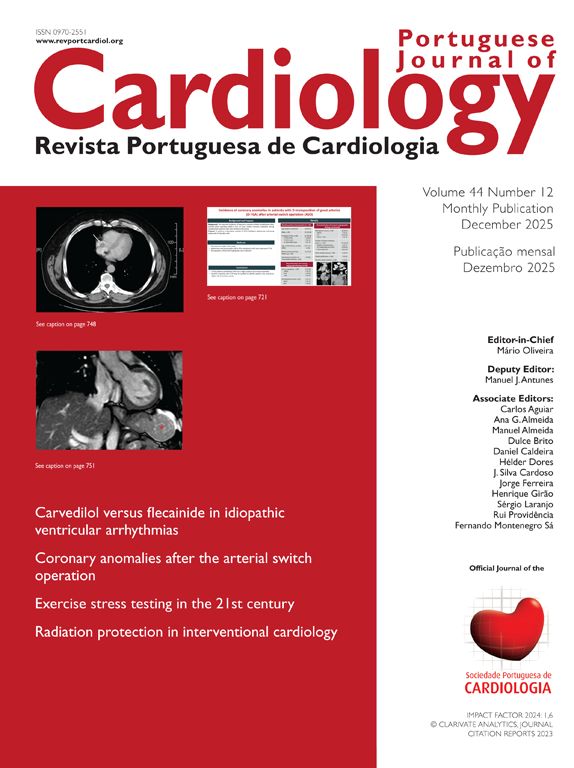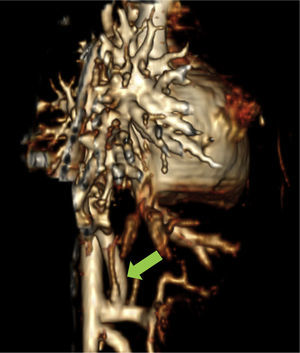Major aortopulmonary collateral arteries (MAPCAs) are anomalous vessels that develop from the aorta or its main branches and supply the pulmonary parenchyma with oxygenated blood. They are usually associated with congenital heart disease and are rare in isolation.
We report the case of a newborn girl, full term, with no relevant history, in whom a III/VI murmur was detected on the left sternal border on the first day of life. At seven days a remote cardiology consultation raised the suspicion of right inferior pulmonary vein stenosis despite normal pulmonary artery systolic pressure. Echocardiography in the Hospital Pediátrico Carmona da Mota showed “an anomalous vessel draining into the right inferior pulmonary vein”.
At one month of age computed tomography angiography revealed a single MAPCA emerging from the celiac trunk to the right lung, draining into the right inferior pulmonary vein (Figure 1).
Diagnostic and therapeutic catheterization at five months showed normal systemic and pulmonary pressures. Angiography of the pulmonary artery revealed branches of reasonable caliber and normal venous return with mixed perfusion of the right inferior pulmonary field by the pulmonary artery and the MAPCA (Figure 2), while angiography of the aorta showed a wide collateral (7 mm), emerging from the celiac trunk to the right inferior lung (Figure 3). It was decided to embolize the collateral with a 10/7-mm Amplatzer Vascular Plug II, leaving a residual shunt (Figure 4).
The patient had a good clinical course with regular cardiological follow-up. She is currently two years old and has no shunt after three months of embolization, normal height, weight and development, and no clinical or echocardiographic signs of heart failure.
Ethical disclosuresProtection of human and animal subjectsThe authors declare that no experiments were performed on humans or animals for this study.
Confidentiality of dataThe authors declare that they have followed the protocols of their work center on the publication of patient data.
Right to privacy and informed consentThe authors have obtained the written informed consent of the patients or subjects mentioned in the article. The corresponding author is in possession of this document.
Conflicts of interestThe authors have no conflicts of interest to declare.
Please cite this article as: Martins L, Oliveira RS, Silva P, et al. Giant major aortopulmonary collateral artery – causa rara de sopro em recém-nascidos. Rev Port Cardiol. 2014;33:483–485.













